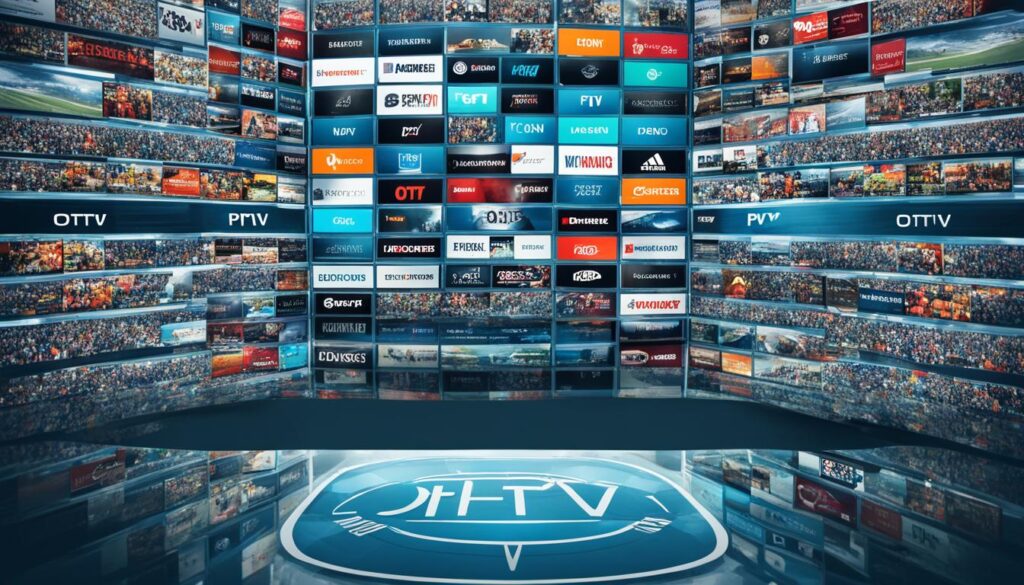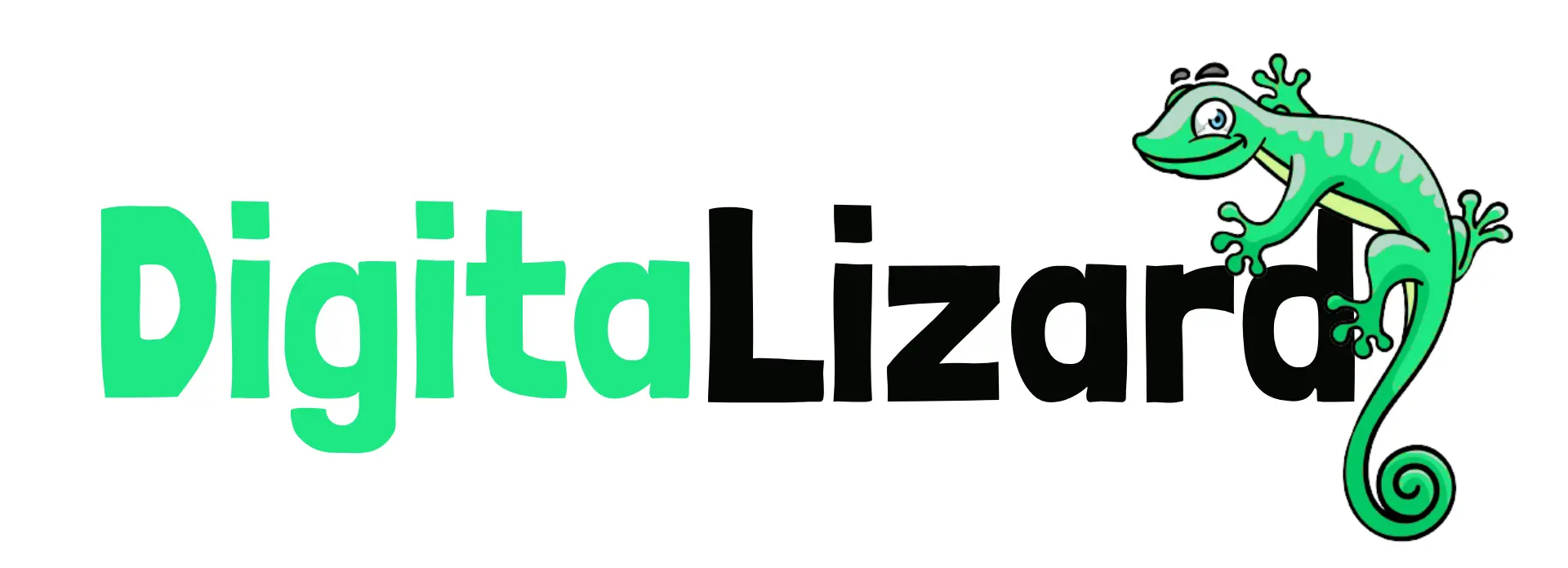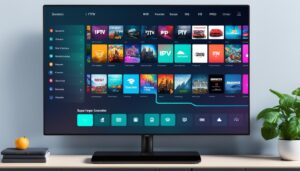In today’s digital age, streaming services have revolutionized the way we consume television content. Two popular methods of streaming are Internet Protocol Television (IPTV) and Over-the-Top (OTT) services. While they may seem similar, there are key differences that set them apart.
Key Takeaways
- IPTV refers to traditional TV service delivered through an internet connection and a private network managed by the service provider.
- OTT is a digital streaming service that delivers video content over the internet without the need for a set-top box or a private network.
- The main difference lies in the network used for delivery – IPTV uses a private network, while OTT uses the open internet.
- IPTV offers live TV channels, time-shifted television, and video on demand, but it requires a set-top box and is often more expensive.
- OTT provides a more flexible and cost-effective option for content delivery, catering to a wider audience.
How IPTV and OTT Work
In order to understand the differences between IPTV and OTT, it is crucial to grasp how each of these technologies works. This section will delve into the functionalities of IPTV and OTT, as well as their content delivery methods.
IPTV Functionality
Internet Protocol Television (IPTV) operates by transmitting TV channels and video content over a dedicated network managed by the service provider. The content is stored on servers, allowing users to access a wide range of channels and on-demand content.
IPTV typically requires a set-top box connected to the TV, which acts as a receiver for the transmitted signals. This set-top box enables users to navigate through different channels and select the content they prefer to watch.
OTT Functionality
Over-the-Top (OTT) streaming services, on the other hand, deliver video content over the internet without the need for a set-top box or a private network.
OTT platforms provide users with direct access to streaming services through various devices such as smartphones, tablets, smart TVs, or gaming consoles. With OTT, users can easily browse through a vast library of on-demand content and choose what they want to watch.
“IPTV relies on a dedicated network for content delivery, while OTT utilizes the open internet.”
While IPTV and OTT share the same goal of delivering video content, they differ in terms of the network used and the accessibility of the services. IPTV relies on a private network managed by service providers, ensuring a more controlled and reliable connection for users.
In contrast, OTT utilizes the open internet, providing users with greater flexibility but potentially leading to occasional buffering or interruptions.
To visualize the differences between IPTV and OTT functionalities, refer to the table below:
| Aspect | IPTV | OTT |
|---|---|---|
| Network | Private network managed by the service provider | Open internet |
| Content Delivery | Transmitted TV channels and video content | Direct access to on-demand content |
| Device Requirement | Set-top box connected to the TV | Various devices such as smartphones, tablets, smart TVs |
| Control | Service provider determines content availability | Users have control over their content choices |
Understanding how IPTV and OTT work is crucial in determining which platform best suits the needs of content providers and viewers alike. The next section will explore the pros and cons of both IPTV and OTT streaming services, enabling a comprehensive evaluation of their advantages and limitations.
Pros and Cons
When it comes to streaming services, both IPTV and OTT have their own set of advantages and disadvantages. Understanding these pros and cons can help you make an informed decision based on your specific needs and preferences.
Pros of IPTV:
- Higher quality of service: IPTV offers a more reliable and stable connection, resulting in fewer interruptions and buffering issues.
- Access to live TV channels: IPTV allows you to watch live TV channels, just like traditional cable or satellite services.
- Time-shifted television: With IPTV, you can easily pause, rewind, or fast-forward through your favorite shows, giving you more control over your viewing experience.
- Video on demand: IPTV platforms often provide a wide range of video on demand content, allowing you to choose from a vast library of movies, TV shows, and other multimedia.
Cons of IPTV:
- Set-top box requirement: Unlike OTT, IPTV requires a set-top box or a dedicated IPTV receiver to access the service.
- Higher pricing: IPTV services are often more expensive compared to OTT platforms, as they typically involve additional equipment and infrastructure costs.
- Limited channel options: While IPTV offers live TV channels, the available channel options may be more limited compared to traditional cable or satellite providers.
Pros of OTT:
- Lower cost: OTT platforms generally have lower subscription costs compared to IPTV services, making them more budget-friendly.
- Wide range of channel options: OTT streaming services offer a vast selection of channels and content options, giving you more variety in terms of what you can watch.
- No set-top box requirement: With OTT, you can stream content directly through your smart TV, computer, smartphone, or other compatible devices, eliminating the need for additional equipment.
- Flexibility and portability: OTT allows you to access your favorite shows and movies from anywhere with an internet connection, giving you the freedom to watch on the go.
Cons of OTT:
- Potential streaming issues: Depending on your internet connection, OTT streaming may be prone to buffering or lagging, especially during peak times or with slower internet speeds.
- Limited reliability: Unlike IPTV, which operates on a dedicated network, OTT relies on the open internet, which can sometimes result in less reliable service.
- May require multiple subscriptions: To access different OTT platforms, you may need to subscribe to multiple services, which can increase costs and potentially cause inconvenience.
Understanding the pros and cons of IPTV and OTT streaming services is crucial for making an informed decision. Consider factors such as pricing, channel options, reliability, and your individual preferences to choose the streaming service that best suits your needs.

Stay tuned for the next section where we will discuss the key factors to consider when choosing between IPTV and OTT for content delivery.
Choosing Between IPTV and OTT for Content Delivery
When deciding between IPTV and OTT for content delivery, it’s essential to consider several factors to ensure the best fit for your needs. By assessing your target audience, desired content options, pricing, and infrastructure requirements, you can make an informed decision that aligns with your goals.
Target Audience: Understanding your target audience is crucial. Are you catering to a specific demographic or a broad range of viewers? IPTV’s traditional TV service might appeal more to older or less tech-savvy viewers who prefer a familiar viewing experience. In contrast, OTT’s flexibility and on-demand content make it ideal for younger, more digitally inclined audiences.
Desired Content Options: Consider the type of content you want to deliver. If you require access to live TV channels, time-shifted television, and a vast library of video on demand, IPTV might be the better choice, as it provides a comprehensive range of content options. However, if your focus is primarily on-demand content and customizable viewing experiences, OTT platforms excel in delivering personalized entertainment.
Pricing: Pricing plays a significant role in decision-making. IPTV services often involve additional costs, such as set-top boxes and contracts, making them a more substantial investment. On the other hand, OTT platforms typically offer flexible subscription plans, allowing viewers to choose from various pricing tiers to match their budget.
Infrastructure Requirements: Assess your existing network infrastructure and capabilities. IPTV relies on a private network and requires robust infrastructure to deliver high-quality content with minimal interruptions. If you already have a well-established network infrastructure or are a traditional TV provider looking to expand your offerings, IPTV may be the better option. Alternatively, if you’re starting from scratch or have limited infrastructure, OTT’s reliance on the open internet makes it a more accessible and cost-effective choice.
To help you compare the key factors between IPTV and OTT, here’s a comprehensive table:
| Factors to Consider | IPTV | OTT |
|---|---|---|
| Target Audience | Traditional TV viewers, older demographics | Digital-savvy viewers, younger demographics |
| Desired Content Options | Live TV channels, time-shifted TV, video on demand | On-demand content, customizable viewing experiences |
| Pricing | Higher initial investment, additional costs (set-top boxes, contracts) | Flexible subscription plans, affordable options |
| Infrastructure Requirements | Private network, robust infrastructure | Open internet, accessible infrastructure |
By carefully considering these factors, you can determine whether IPTV or OTT is the better choice for your content delivery needs. Remember, IPTV is more suitable for traditional TV providers or organizations with existing infrastructure, while OTT offers greater flexibility and cost-effectiveness for reaching a wide audience.
How IPTV and OTT Complement Each Other
While IPTV and OTT have their distinct features, they can also complement each other in certain cases. Hybrid solutions that combine IPTV and OTT technologies offer the advantages of both, providing a robust and reliable network for live TV channels and a flexible and scalable platform for on-demand content. This allows content providers to reach a larger audience and offer a more comprehensive viewing experience.
With IPTV, viewers can enjoy a seamless streaming experience with high-quality live TV channels and access to time-shifted television and video-on-demand content. They can rely on a dedicated network managed by the service provider for reliable and uninterrupted viewing.
On the other hand, OTT platforms provide users with the flexibility to choose what they want to watch, when they want to watch it. With an open internet connection, viewers can access a wide range of on-demand content, including movies, TV shows, and original programming.
By combining IPTV and OTT technologies, content providers can offer hybrid solutions that leverage the strengths of both platforms. For example, they can use IPTV to deliver live TV channels, sports events, and news broadcasts, while offering a comprehensive library of on-demand content through an OTT platform. This hybrid approach allows viewers to enjoy the best of both worlds, enhancing their viewing experience.
“Hybrid solutions that combine IPTV and OTT technologies offer the advantages of both, providing a robust and reliable network for live TV channels and a flexible and scalable platform for on-demand content.”
This combination also benefits content providers by expanding their reach to a larger audience. IPTV caters to users who prefer a more traditional TV experience, while OTT appeals to those who value flexibility and customization. By offering hybrid solutions, content providers can cater to the preferences of a diverse viewer base, increasing engagement and viewership.
Additionally, hybrid solutions allow content providers to scale their offerings and adapt to changing market demands. They can easily add new content, introduce personalized recommendations, and incorporate interactive features to keep viewers engaged and satisfied.
Benefits of Hybrid Solutions:
- Access to live TV channels through a robust and reliable network
- Flexible and scalable platform for on-demand content
- Expanded audience reach and engagement
- Customization options for viewers
- Ability to adapt to changing market demands
Overall, the combination of IPTV and OTT technologies offers a powerful solution for content delivery. By harnessing the strengths of both platforms, content providers can optimize their offerings and provide viewers with a comprehensive and enjoyable viewing experience.
Comparing IPTV and OTT in Hybrid Solutions
| IPTV | OTT |
|---|---|
| Delivers live TV channels | Focuses on on-demand content |
| Reliable network managed by service provider | Accessible over the open internet |
| Structured viewing experience with linear programming | Personalized viewing experience |
| Higher initial setup and maintenance costs | Cost-effective and scalable |

Understanding IPTV and OTT Content Access Models
In the world of streaming services, IPTV and OTT offer different content access models for users. Let’s take a closer look at how these models differ and what they mean for content delivery.
IPTV Content Access Model
IPTV, or Internet Protocol Television, provides users with access to TV programming through an Electronic Program Guide (EPG). This guide allows users to browse through scheduled TV content and choose what to watch. IPTV offers options for live linear television, catch-up TV, and video-on-demand.
OTT Content Access Model
OTT, or Over-the-Top, primarily focuses on video-on-demand content. Unlike IPTV, which relies on scheduled programming, OTT allows users to choose and watch specific shows or movies at any time. OTT platforms provide a wide selection of on-demand content for users to enjoy.
Let’s visualize the differences between the two content access models in the following table:
| IPTV | OTT |
|---|---|
| Access to live linear television | Primarily focused on video-on-demand content |
| Offers catch-up TV | Allows users to choose and watch specific shows or movies at any time |
| Includes an Electronic Program Guide (EPG) | No scheduled TV programming |
As seen in the table, IPTV and OTT differ in their offerings, with IPTV providing a more traditional TV experience, including live linear television and a structured programming guide. OTT, on the other hand, caters to users’ preferences for on-demand content and the freedom to select specific shows or movies at their convenience.
By understanding the differences between IPTV and OTT content access models, content providers can better tailor their services to meet the needs and preferences of their target audience.
Comparing IPTV and OTT Viewer Experiences
The viewer experience differs significantly between IPTV and OTT services, catering to different user preferences. IPTV offers a more traditional TV experience, granting access to live TV channels and following a linear programming schedule.
This format appeals to users who prefer a structured and familiar viewing experience, reminiscent of traditional cable or satellite TV.
On the other hand, OTT provides a more personalized and on-demand experience. Users have the freedom to choose what, when, and where to watch their favorite content.
With OTT, viewers can enjoy the flexibility of customizing their viewing preferences, creating their own schedule, and accessing a vast library of movies, TV shows, and other video content.
For those who value convenience and the ability to stream on various devices like smartphones, tablets, and smart TVs, OTT platforms offer the perfect solution.
The freedom to choose from a wide range of streaming services and subscriptions resonates with users who prefer a customized and tailored viewing experience.
Ultimately, when deciding between IPTV and OTT, user preferences play a crucial role. Some viewers prefer the familiarity and channel lineup of traditional TV, while others prioritize the convenience and customization provided by OTT platforms. Regardless of the choice, both options offer unique benefits that can enhance the overall viewer experience.
Check out other helpful resources:
Is IPTV Legal? What You Should Know About IPTV Laws In 2023
Looking For An IPTV Provider? Here are The Things That Should Matter in 2024
FAQ
What is the difference between IPTV and OTT?
IPTV refers to TV services delivered through a private network, while OTT is a streaming service that delivers content over the internet without a set-top box or private network.
How do IPTV and OTT work?
IPTV transmits TV channels and content over a dedicated network, delivered through a set-top box. OTT delivers video content over the internet without the need for a set-top box or private network.
What are the pros and cons of IPTV and OTT?
IPTV offers higher quality of service and access to live TV channels, but requires a set-top box and is usually more expensive. OTT is more flexible and cost-effective, focusing on on-demand content.
How do I choose between IPTV and OTT for content delivery?
Consider factors like target audience, desired content options, pricing, and infrastructure requirements. IPTV may be suitable for traditional TV providers, while OTT is a more flexible option for a wider audience.
How do IPTV and OTT complement each other?
Hybrid solutions combining IPTV and OTT technologies offer a robust network for live TV channels and a scalable platform for on-demand content, providing a comprehensive viewing experience.
What are the content access models for IPTV and OTT?
IPTV offers an Electronic Program Guide (EPG) for scheduled TV programming and options for live TV, catch-up TV, and video on demand. OTT focuses on video on demand content, allowing users to choose and watch specific shows or movies at any time.
What are the differences in viewer experiences between IPTV and OTT?
IPTV provides a more traditional TV experience with live TV channels and a linear programming schedule. OTT offers a personalized experience, allowing users to choose what, when, and where to watch.





